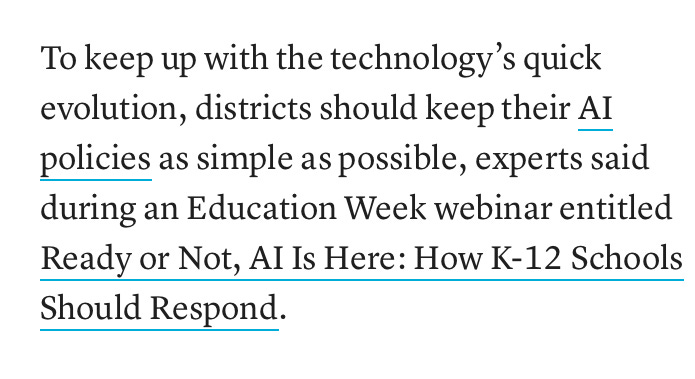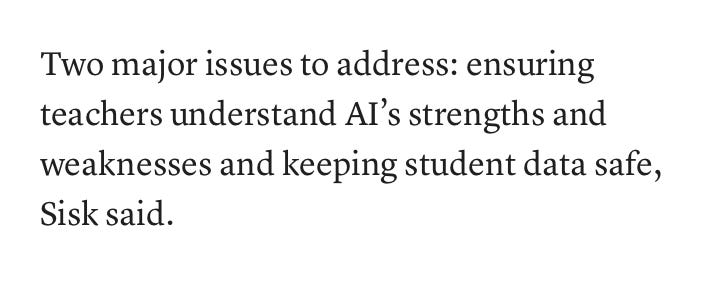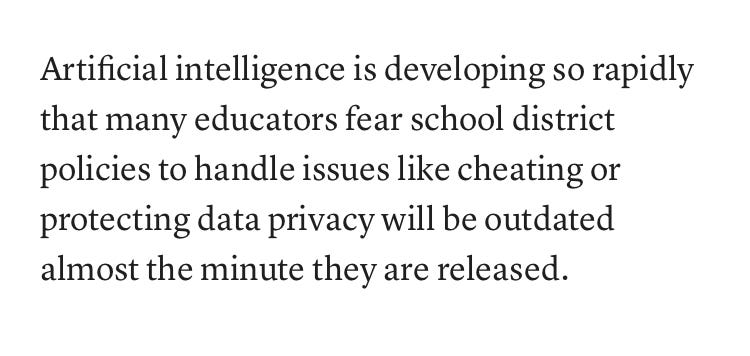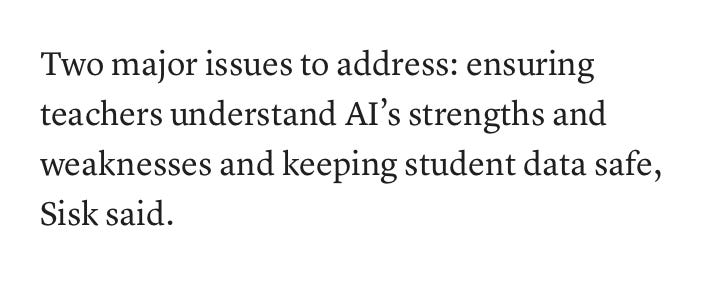Put Your Own Mask on First: The Art of Saving Lives
Sam Altman, the ousted CEO of OpenAI, is back with his company. Remember that he started the organization as a non-profit in 2016 and attracted enough funds to successfully put ChatGPT on the market in November, 2022, including $13,000,000,000.00 from Microsoft, a giant rivaled only by Apple. As near as I can tell, the dispute between Sam and the ousting Board of Directors turned on fear and trembling. His people, the 700 plus employees of the company (it has 800) who signed a pledge to defect to Microsoft if the Board wasn’t dissolved and Sam returned, must have strong faith in what the media has been calling his “aggressive” stance of future development.
Evidence of increased turbulence in the preK-12 school system flying blindly through the skies of AI showed up in subtle ways online and in the media as a result of the ousting. Already fearful of AI, obviously a wrecking ball to literacy instruction grounded in rote memory and artificial five-paragraph essays, the education “system” took two or three steps backwards in its reluctance to embrace a tool with enormous implications for its own societal functions. Having done nothing as a “system” to take up this new technology beyond finding some sand in which to stick its head, this Sam Altman shakeup gave it another reason to creep on in its assembly line pace.
To be clear, I’m not speaking about teachers nor principals. I am speaking about school boards and superintendents, the leaders in position to set policies, articulate strategies, and allocate resources, human and otherwise. I am speaking about State Departments of Education who view LEAs as autonomous units fending for themselves so long as they keep their test scores up. I am speaking about State Superintendents of Education and State Governors. I am particularly speaking about the Federal Department of Education, the Department that conservative Republicans have tried to gut for at least four decades, the Department that was invented in 1867 just after the Civil War to put the common school on the road to equity and democratic schools.
EdWeek published an article on 11/20/23 reporting on the strategy many districts have adopted to weather the AI storm. This new do-nothing strategy will provide the leaders of the system with another year of comfortable numbness with heads firmly implanted in sand. Witness:
“Respond” is the wrong word to use in the title of the webinar. The real title should read “How K12 Schools Can Stay Nonresponsive and Avoid Appearing Fearful.” What should they do—better said, not do?
The first order of business for the upcoming year? Schools should under no circumstances focus on educating leadership about AI as a way to get their heads out of the sand. You know the substance that rolls downhill and where it lands in schools—on teachers:
The rationale for thought and policy leaders in education is based on fear, not fact. What should leaders do when something totally new and disruptive comes along? Perhaps try to educate themselves deeply on the nature and affordances of the innovation? Well, here’s the plan:
How can leaders who fear the future and try to wait it out just in case it doesn’t happen qualify as leaders? The articulation of the two major issues in the following excerpt is irrational. How are leaders to ensure teacher professional development if they don’t understand AI themselves, if they prefer to wait and see what happens? Go figure.
https://www.edweek.org/technology/crafting-a-school-policy-on-ai-heres-what-experts-recommend/2023/11







